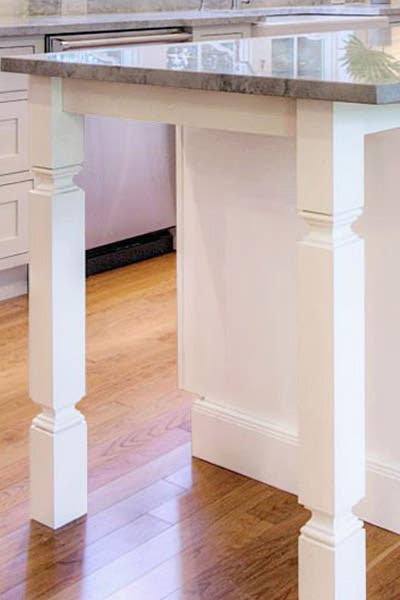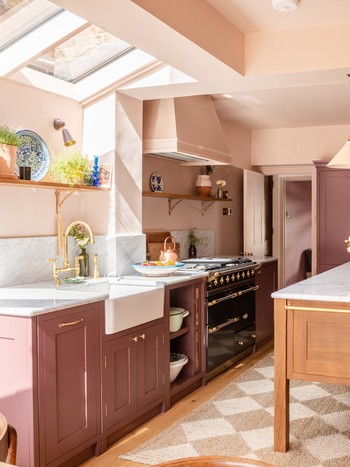Change Any Kind Of Kitchen Space with Lovely Legs For Kitchen Island Options
Change Any Kind Of Kitchen Space with Lovely Legs For Kitchen Island Options
Blog Article
Crucial Aspects to Think About When Choosing Legs For Kitchen Island
Picking the appropriate legs for a cooking area island includes a mindful assessment of several factors that can substantially affect both functionality and visual charm. As we explore these aspects, it comes to be clear that each decision can have far-reaching effects for the total kitchen experience.
Product Options
When picking legs for a kitchen island, comprehending the different product options is vital for accomplishing both visual allure and structural integrity (Legs For Kitchen Island). The option of product dramatically influences not only the toughness of the island yet also its overall style and performance
Metal legs, frequently made from stainless steel or wrought iron, contribute a commercial and contemporary feel while ensuring resilience and stability. These products are immune to use and can support substantial weight, making them perfect for larger islands.
One more option is engineered products, like MDF or plywood, which can be a lot more economical while still providing a range of finishes. They may not give the exact same level of security as solid wood or steel. Legs For Kitchen Island. Finally, materials such as acrylic or glass can develop a contemporary appearance, though they might require added support to ensure security.
Ultimately, the choice of material for cooking area island legs ought to straighten with the preferred functionality and the general theme of the kitchen area.
Design and Layout

When considering style, the form and coating of the legs are critical. Conical legs can give a feeling of agility and sophistication, while thicker, a lot more durable legs can communicate strength and stability. Additionally, the coating-- be it repainted, discolored, or natural-- ought to complement the cabinetry and kitchen counter products to produce a unified look.
Furthermore, the design of the legs can additionally mirror personal taste. Personalized or attractive legs, such as those including elaborate carvings or one-of-a-kind geometric forms, can function as prime focus, including character and personality to the cooking area. Eventually, the best choice will certainly not only enhance functionality yet additionally raise the aesthetic charm, making the kitchen area island a standout attribute of the home.
Elevation Considerations
Picking the proper height for cooking area island legs is important, as it directly affects both functionality and convenience. The conventional elevation for a kitchen area island generally varies from 36 to 42 inches, aligning with usual counter top elevations. A 36-inch height is excellent for cooking and food preparation, enabling comfy use of cooking area home appliances and devices. Conversely, an elevation of 42 inches is frequently liked for islands intended for bar seating, suiting taller stools and using a casual dining experience.

It is additionally important to account for individuals' choices and elevations. Customizing my website the elevation can make certain a comfortable experience for all family members, making the cooking area island a much more practical and satisfying space.
Weight Assistance
Making certain adequate weight support for cooking area island legs is essential for both safety and performance. The kitchen area island frequently serves several functions, consisting of food prep work, eating, and added storage, necessitating a robust support framework. When choosing legs, it is important to consider the total weight capability needed based upon the island's meant usage and the products that will certainly be put on it.
The choice of product for the legs plays a significant duty in their weight-bearing abilities. Solid timber, steel, and sturdy composites usually give superior strength compared to lighter products. Furthermore, the style of the legs-- whether they are directly, tapered, or have a pedestal kind-- can affect their capability to distribute weight efficiently throughout the framework.
Moreover, the leg positioning must be tactically prepared to enhance stability. Legs placed at the corners or with a larger base can much better sustain larger tons. Constantly get in touch with the manufacturer's specs regarding tons limitations to make certain that the legs can maintain the intended weight without endangering safety and security. In summary, picking kitchen area island legs with sufficient weight support is important for producing a safe and useful culinary space.
Installment and Upkeep
Appropriate installation and maintenance of cooking area island legs are crucial for ensuring longevity and stability. This commonly involves safeguarding the legs to the island base making use of ideal fasteners, guaranteeing that the legs are degree and lined up.
Once set up, regular maintenance is necessary to preserve the stability and look of the legs - Legs For Kitchen Island. For wooden legs, routine cleaning with a moist fabric and application of suitable timber polish can prevent moisture damage and preserve their coating. Steel legs might call for additional hints a gentle cleansing remedy to get rid of grease and grime, adhered to by a dry fabric to prevent corrosion development
In addition, check the legs routinely for signs of wear or damage, such as splits or loose joints. Tightening up screws or screws as needed can likewise prolong the lifespan of the legs. By sticking to these setup and maintenance techniques, homeowners can make sure that their kitchen island stays durable and aesthetically appealing for years to find.
Final Thought

Visual comprehensibility is vital in picking the style and design of helpful resources legs for a cooking area island, as these elements significantly affect the overall atmosphere of the area. Conical legs can supply a feeling of lightness and beauty, while thicker, a lot more robust legs can communicate toughness and stability.Selecting the proper elevation for cooking area island legs is essential, as it directly impacts both functionality and comfort. In recap, choosing kitchen area island legs with ample weight assistance is important for creating a practical and secure cooking area.
In final thought, choosing legs for a kitchen island demands careful factor to consider of numerous variables, including material alternatives, design, elevation, weight assistance, and installment.
Report this page